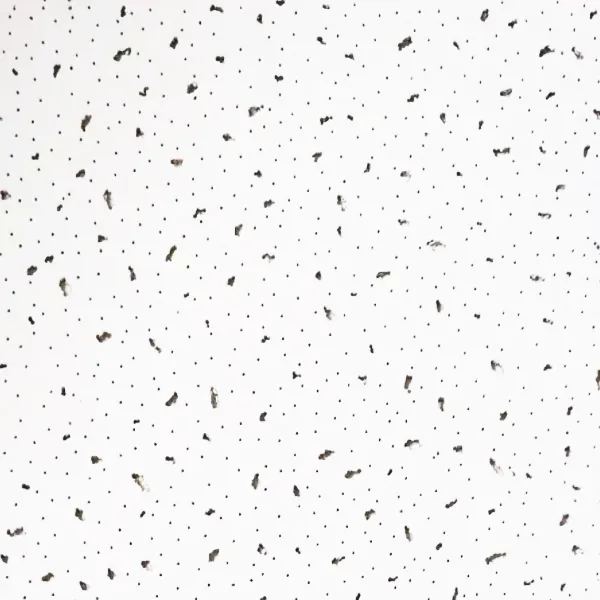10 月 . 18, 2024 21:20 Back to list
Exploring the T-Bar Grid Framework for Effective Design and Layout Solutions
Understanding the T- Bar Grid System An Essential Design Framework
In architecture and interior design, the importance of a well-thought-out grid system cannot be overstated. One such system that has gained prominence over recent years is the T-Bar grid system. This framework not only enhances aesthetic appeal but also serves functional purposes in various spaces, including offices, commercial buildings, and even residential environments. This article delves into the T-Bar grid system, exploring its components, advantages, and application in design.
What is a T-Bar Grid System?
The T-Bar grid system is an architectural ceiling framework that features T-shaped (or T-bar) suspension components. These T-bars create a grid that supports ceiling tiles or panels, allowing for a versatile and modular ceiling design. Typically made from lightweight materials such as metal or vinyl, the T-bars are anchored to the ceiling and are arranged in a grid pattern, creating a suspended ceiling structure that can accommodate various ceiling finishes.
Components of a T-Bar Grid System
The primary components of a T-Bar grid include the main tees (longer bars), cross tees (shorter bars), and sometimes wall angles
.1. Main Tees These horizontal elements span the length of the room, providing the main framework for the grid. 2. Cross Tees Positioned perpendicular to the main tees, cross tees fill in the grid and help define the size of each ceiling tile or panel. 3. Wall Angles These are installed along the perimeter of the room to secure the grid structure in place.
The combination of these components allows for easy installation and replacement of individual ceiling tiles, providing flexibility in maintenance and design.
Advantages of a T-Bar Grid System
t bar grid system

One of the key advantages of the T-Bar grid system is its versatility. Designers can choose from a wide range of ceiling tiles to create various aesthetic effects, from a sleek modern look to a more traditional appearance. Furthermore, the system allows for easy access to the space above the ceiling for maintenance purposes, as tiles can be removed and replaced without disrupting the entire ceiling structure.
Another significant benefit is the system’s acoustic properties. Many T-Bar ceiling tiles are designed with sound-absorbing materials, enhancing the overall acoustics of a room. This feature is especially valuable in commercial settings where noise control is essential for productivity and comfort.
Additionally, the T-Bar grid system allows for integration with lighting and HVAC systems. Light fixtures can be easily installed within the grid, and the design can facilitate the efficient placement of air vents and ducts. This creates a seamless look while ensuring essential building systems operate effectively.
Applications in Design
The T-Bar grid system is widely used in various applications, from commercial offices and retail spaces to educational institutions and healthcare facilities. In office environments, for example, it can create visually appealing and acoustically balanced workplaces that enhance employee productivity. In retail design, the system can accommodate dynamic lighting solutions that draw customers' attention to products on display.
Moreover, in environments such as schools and hospitals, the T-Bar grid system's adaptability and maintenance-friendly features ensure that changing needs can be met without significant renovations. The ability to replace tiles with designs that reflect current trends or branding needs provides a continual opportunity for aesthetic refreshment.
Conclusion
In summary, the T-Bar grid system represents a critical intersection of functionality and design in modern architecture. From its structural components to its myriad advantages, it is an indispensable tool for architects and interior designers alike. By providing flexibility, ease of maintenance, and aesthetic appeal, the T-Bar grid system enhances the overall functionality of spaces while catering to the evolving needs of users. As design trends continue to shift toward more adaptable and user-centric environments, the T-Bar grid system is likely to remain a crucial element in the architectural toolkit.
-
Revolutionizing Interior Design with Ceilings t grid Suspended SystemNewsOct.29,2024
-
Revolutionizing Ceiling Design with ceiling access panel with Gypsum Tile WaterproofNewsOct.29,2024
-
Revolutionizing Interior Design with PVC Gypsum Ceiling: A Comprehensive GuideNewsOct.29,2024
-
Elevating Interior Design with High quality Mineral Fiber Ceiling TilesNewsOct.29,2024
-
Revolutionizing Interior Design with PVC Gypsum Ceiling: A Comprehensive GuideNewsOct.29,2024
-
Elevating Interior Design with High-Quality Mineral Fiber Ceiling Tiles: A Comprehensive GuideNewsOct.29,2024







